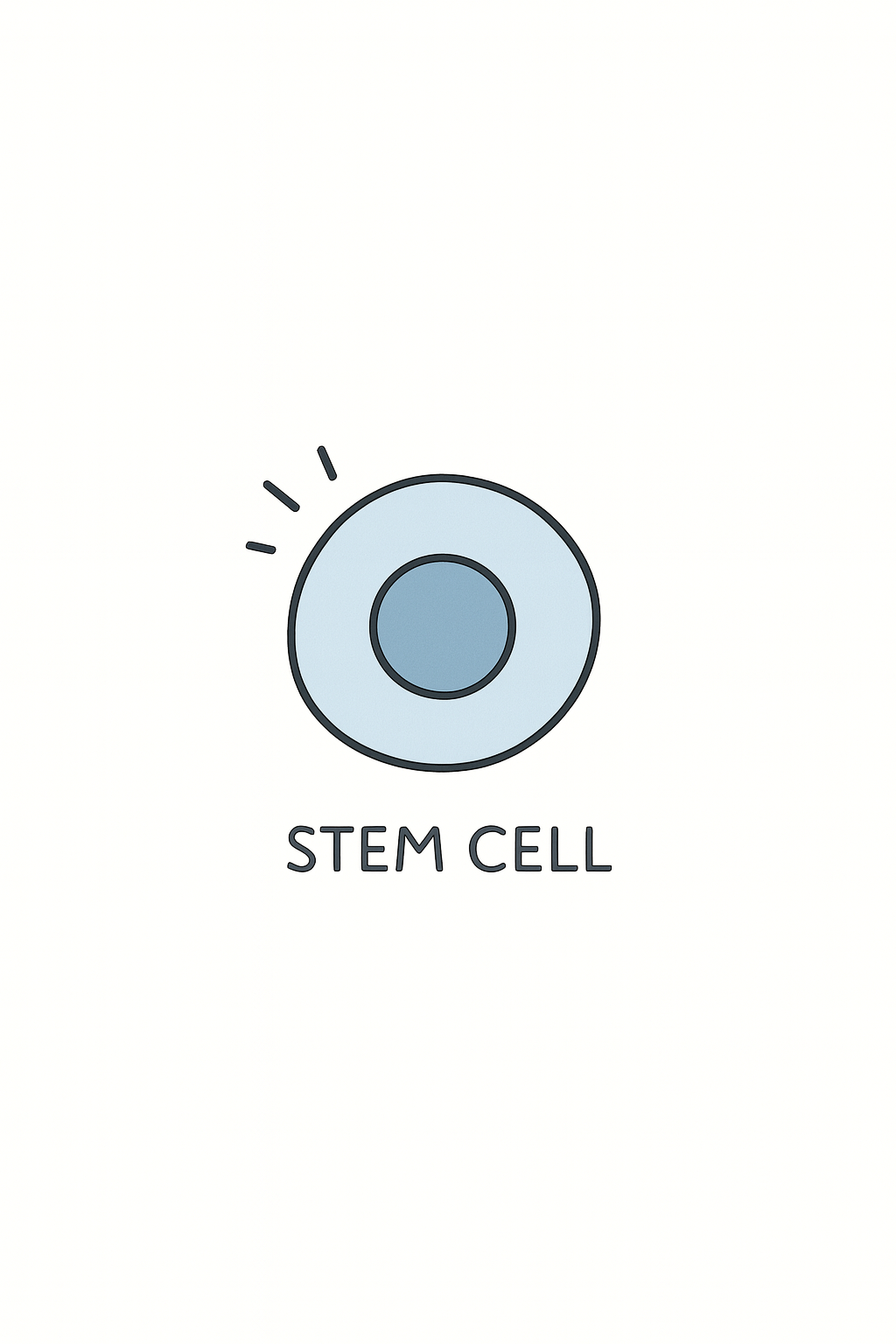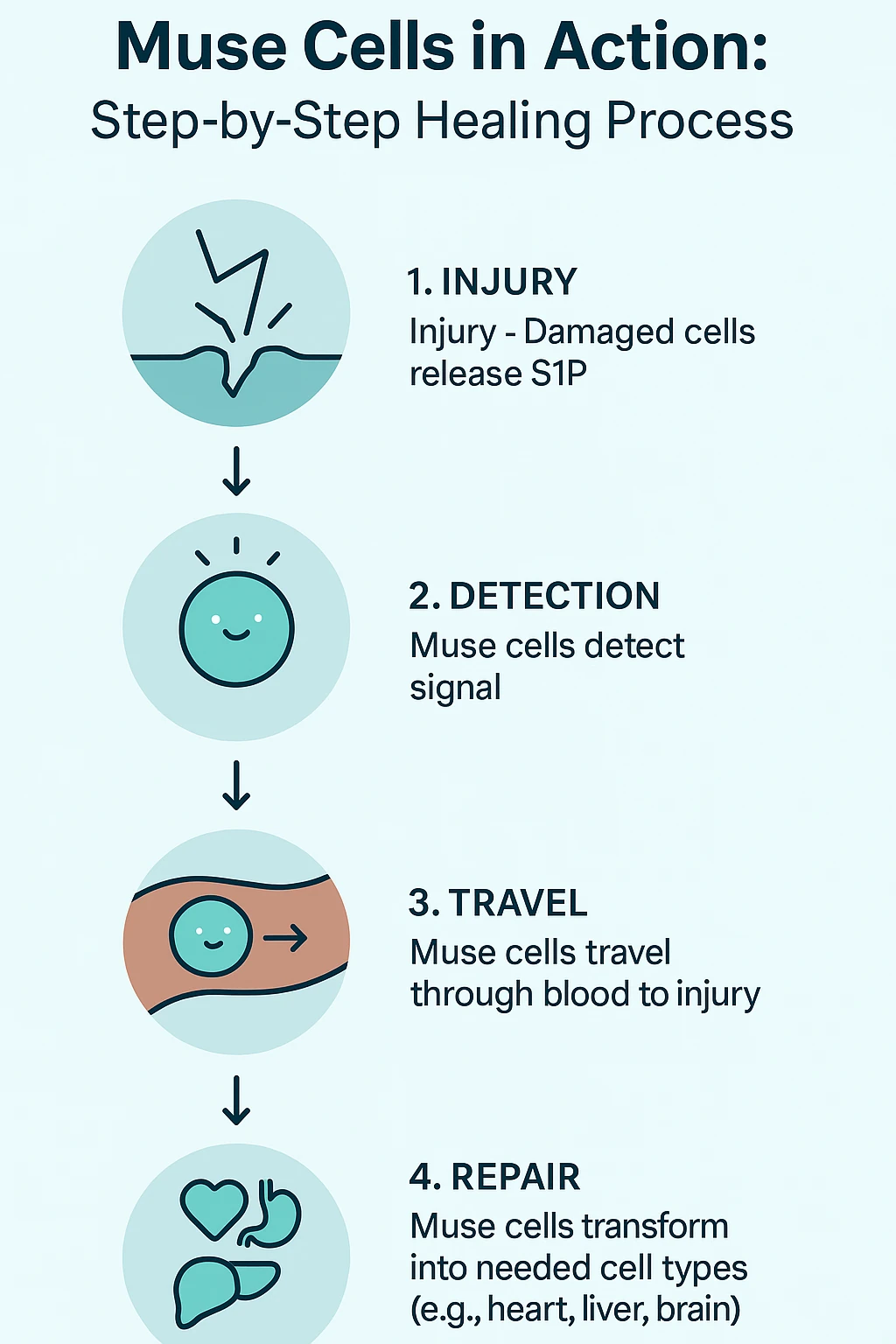Muse Stem Cells: What Are They? How Do They Work?

Muse Cells: Your Body's Hidden Repair Team
The field of regenerative medicine is advancing rapidly, with new stem cell breakthroughs making headlines each year. Among the most exciting recent developments is the emergence of Muse cells into mainstream medical research. Though these Muse stem cells were discovered in 2010, they've gained significant attention lately due to impressive clinical trial results. So what exactly are Muse cells and why are researchers so enthusiastic? These cells offer unique advantages that set them apart from traditional stem cell therapies: they occur naturally throughout your body, thrive in oxygen-deprived environments, and can actively repair damaged tissue without forming tumors. Current research and Muse cells clinical trials are exploring their potential for treating everything from cardiovascular disease and stroke to spinal cord injuries, neurodegenerative conditions like ALS and Parkinson's, and even rare genetic disorders.
The Basics: What Are Muse Cells?
Imagine having paramedics circulating in your blood 24/7, waiting for an injury. That's essentially what Muse cells do. They're a special type of stem cell, and about 1 in every 100 stem cells in your body is actually a Muse cell. What makes Muse stem cells different? While regular stem cells need help finding injuries and often die in harsh conditions, Muse cells are like emergency responders. They know exactly where to go when tissue is damaged, can survive in areas with no oxygen, transform into whatever cell type is needed, and crucially, don't form tumors like some other stem cells do.

How Do Muse Cells Actually Work?
When you get hurt, whether it's a heart attack, stroke, or injury, damaged cells release a chemical cry for help called S1P. Muse cells detect this signal and swim through your bloodstream to find the problem. It's like a biological GPS system that guides them straight to the injury site. Once they arrive, these Muse stem cells assess the situation and transform. If you need heart muscle, they become heart cells. If there's brain damage, they turn into neurons. It's like having workers who can instantly become whatever specialist is needed at the job site. This ability to read their environment and adapt accordingly is what makes Muse cells therapy so promising.

Real Results From Muse Cells Clinical Trials
This isn't just theory anymore. Recent Muse cells clinical trials have shown significant results that are changing how we think about healing.
Heart Attack Recovery with Muse Cells
In a major animal study, researchers tested Muse cells therapy in pigs who had suffered heart attacks. The results were clear. The treated animals had damage areas that were 50% smaller than untreated ones. Their hearts pumped better, and when researchers looked at the tissue under a microscope, the Muse cells had actually transformed into heart muscle and blood vessel cells, literally rebuilding the damaged tissue. Perhaps most importantly, there were no dangerous heart rhythms, a common and serious problem with other cell therapies. How do these Muse stem cells find damaged heart tissue so effectively? Another study revealed the mechanism. When researchers tracked Muse cells in the body, they found that about 1 in 7 cells successfully reached and attached to damaged heart tissue, compared to only 1 in 30 regular stem cells. That's nearly five times better targeting ability. The cells follow the S1P chemical signal like a homing beacon. When scientists blocked this signal, the Muse cells couldn't find the injury and the healing didn't happen, proving these cells are actively seeking out damage rather than randomly floating around.
Stroke Recovery Through Muse Cells Therapy
The human Muse cells clinical trials show even stronger results. In Japan, 35 stroke patients participated in a carefully controlled study testing Muse cells therapy. Half received Muse cells through a simple IV drip, while half got a placebo. The differences were significant. Within three months, 40% of Muse cell patients showed major improvement compared to only 10% in the placebo group. By one year, 68% of the Muse cells therapy patients had significant recovery. Some patients who couldn't walk regained mobility. Others who struggled with daily tasks like eating or dressing themselves became independent again. All this from Muse stem cells delivered through a simple IV, no brain surgery needed, and with no serious side effects or tumor formation.
Breaking the Brain Barrier with Muse Cells
One of the biggest challenges in treating brain injuries is the blood-brain barrier, our body's security system that blocks most treatments from reaching brain tissue. But researchers have discovered something important about Muse cells therapy. Muse cells can be delivered through the nose and actually reach damaged brain areas. In animal studies, this nasal delivery of Muse cells reduced brain damage size and improved movement and function. It's a completely non-invasive approach that could change how we treat not just strokes but potentially other brain conditions. Imagine treating brain injuries with something as simple as nasal drops containing Muse stem cells.
Hope for "Incurable" Diseases
Early Muse cells clinical trials are also testing Muse cells for ALS, also known as Lou Gehrig's Disease. While it's too early to claim victory, the initial results from Muse cells therapy show the treatment is safe and may slow disease progression. For a disease that currently has no cure and few treatment options, even the possibility of slowing it down with Muse cells represents hope for thousands of patients.
Which Conditions Could Benefit From Muse Cells Therapy?
Based on current research and Muse cells clinical trials, these stem cells show the most promise for conditions involving tissue damage and degeneration:
|The common thread? Muse cells work best where tissue needs rebuilding. They're not as effective for conditions caused by genetic defects, infections, or psychological factors. But for physical damage to organs and tissues, Muse cells therapy offers hope where traditional medicine often has little to offer.

Why Are Scientists So Interested in Muse Cells?
The scientific community's interest in Muse stem cells isn't just hype. There are solid reasons why Muse cells represent a breakthrough. First, Muse cells are already in your body. You don't need embryos or complex genetic engineering. These Muse stem cells exist naturally in your bone marrow, fat, and skin. Your body has been using them for maintenance all along; we just didn't know they were there. Second, Muse cells are highly targeted. When they detect damage, they don't just randomly float around hoping to help. They follow chemical signals directly to injury sites and then figure out exactly what type of cell is needed. Once there, Muse cells secrete healing factors like VEGF and HGF that help rebuild tissue and create new blood vessels. Third, and perhaps most importantly, Muse cells therapy is safe. Unlike other powerful stem cells that can grow out of control and form tumors, Muse cells have natural brakes built in. They know when to stop dividing, making them inherently safer than other options we've tried in clinical trials.
What Makes Muse Cells Therapy Different?
To understand why scientists are interested in Muse cells, consider how current treatments work. Traditional stem cell therapy is like shipping in construction workers from far away who might not survive the journey, don't know where to go, and aren't sure what to build when they get there. You need to extract cells surgically, grow them in labs for weeks, inject them precisely where they're needed, and then hope they survive and work. Muse cells therapy is completely different. It's like activating emergency responders already in your bloodstream who are trained, equipped, and ready to go. You collect Muse stem cells from a donor (they don't cause rejection), give them through a simple IV like getting fluids at the hospital, and they find damage on their own and figure out what to become. The simplicity of Muse cells therapy is part of what makes this so promising in clinical trials.
The Bottom Line on Muse Cells
Your body has been using Muse cells for repair all along; we just discovered them. Now we're learning to boost what nature already does with Muse cells therapy. These cells aren't magic bullets that can cure everything, and complex diseases will still need comprehensive treatment. But for tissue damage to hearts, brains, and spinal cords, Muse cells offer something we haven't had before: a way to actually rebuild, not just manage symptoms. The most exciting part is that Muse cells therapy actually works in real patients, not just laboratory mice. People who couldn't walk after strokes are walking again thanks to Muse cells clinical trials. Hearts damaged by heart attacks are growing new muscle with Muse stem cells. Patients with conditions we thought were permanent are getting better. We're entering an age where "permanent damage" might not be so permanent after all. The Muse cells repair crews have been inside you all along, and now we're finally learning how to call them into action. At our clinic, we're closely following Muse cells developments and incorporating the latest advances in regenerative medicine into our treatment protocols. While pure Muse cells therapy is still in clinical trials, our current stem cell treatments naturally contain these Muse stem cells. If you're interested in learning how regenerative medicine with Muse cells might help your condition, reach out to book a consultation with our medical team.
Statements not evaluated by the FDA or COFEPRIS.
Start Today
We invite you to embark on this transformative journey with us through our certified stem cell therapies, a premier treatment option. A stem cell specialist will guide you through the entire process, explaining the program, benefits, and what to expect during and after the procedure. If you have any questions, suggestions, or would like to schedule a consultation, please feel free to reach out. Our dedicated team is here to provide you with the support and information you need to make informed decisions about your health.
